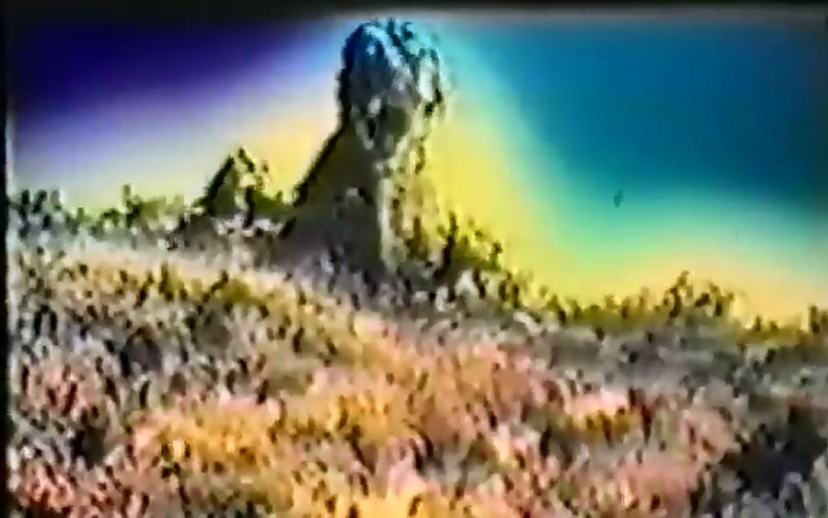
But Toho wasn't making new Godzilla films. This wasn't an offcial hiatus, just that no proposal seemed able to get off the ground. The interruption does make a difference in flavor of the Godzilla films, and divides the franchise into three rather neat eras. Films had gotten more grim, and from a 2014 perspective, more realistic. John Carpenter's 1982 masterpiece The Thing is extraordinarily different from the 1951 Howard Hawks film it remade. But after eight years, Godzilla came back to the screen with the Return of Godzilla.
If you live in a kaju-infested universe and want to meet a kaiju, become a fisherman. Because of the Daigo Fukuryū Maru incdent, which influenced the original Godzilla. And The Return of Godzilla wants very much to be seen as similar to, comparable to, the first film. All continuity after the first film was discarded. Godzilla had come to Japan in 1954, and had never been seen again. So it establishes itself the same way the original does, with luckless fishmermen.
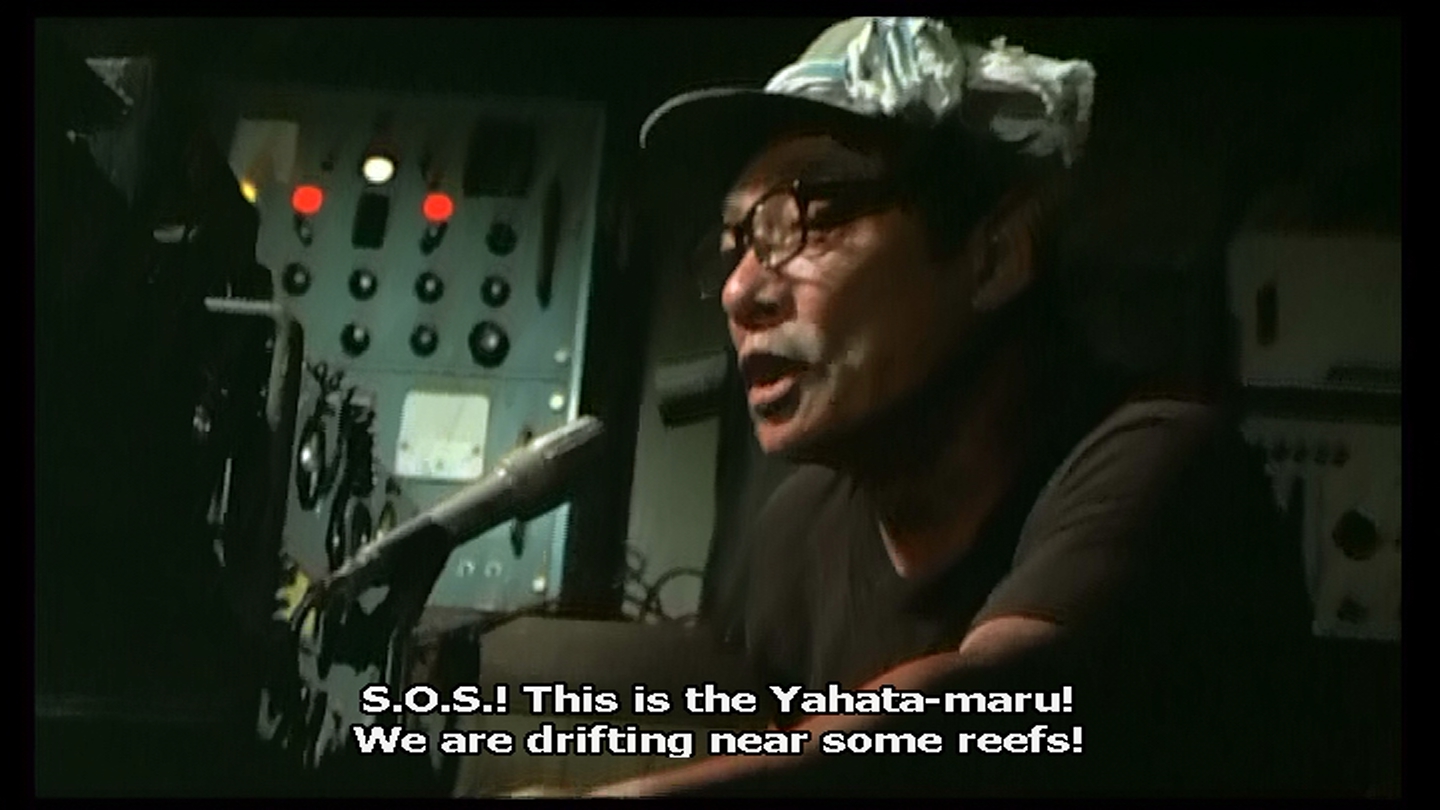
The abandoned ship is investigated by a pleasure-yachter, who discovers that the ship is infested with giant sea-lice, called Shokilas. The idea of the giant parasite is carried forward both Cloverfield and Pacific Rim. One fishermantrmains alive, and is able handed pictures of the original Godzilla which he identifies as the monster he saw before the mutated sea louse killed everyone.
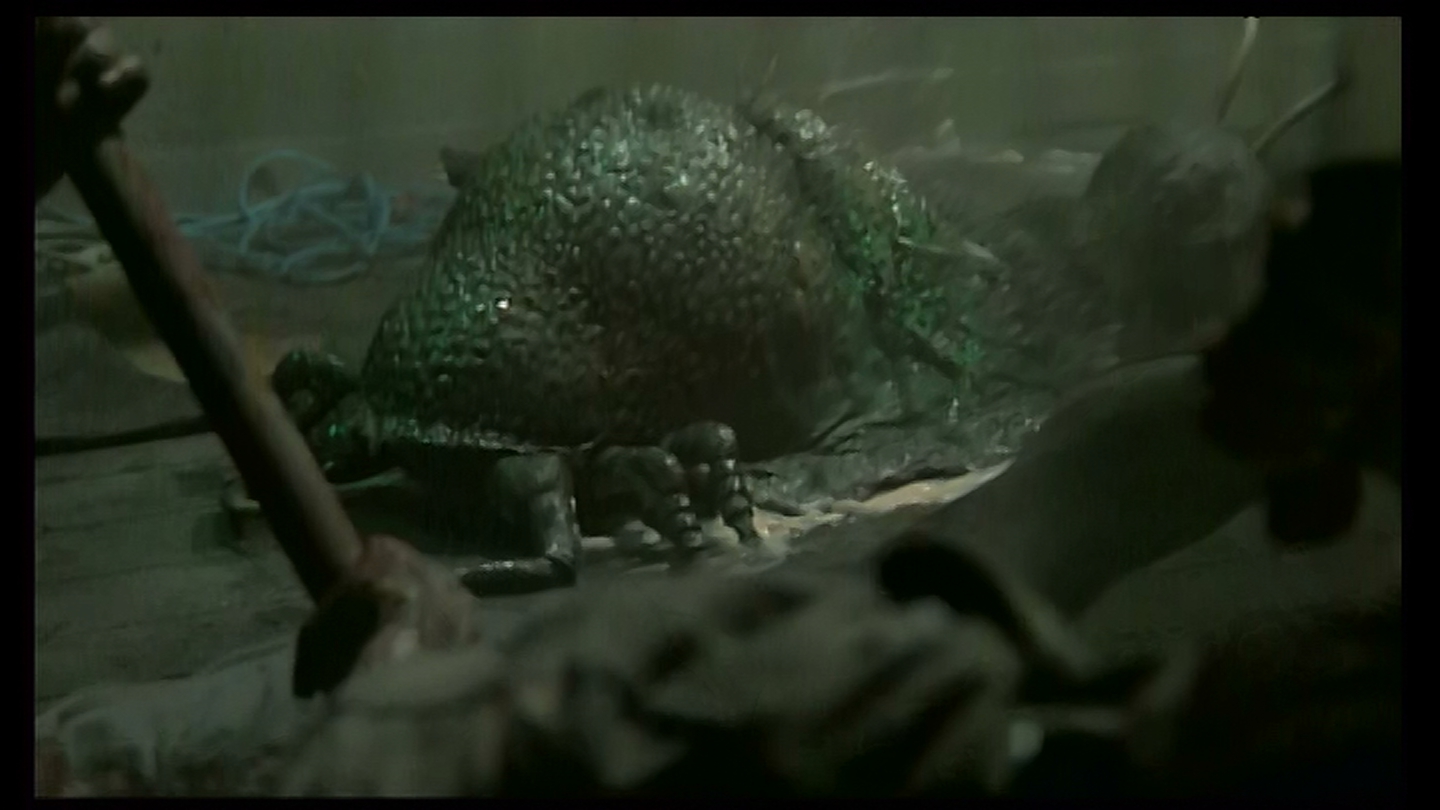
As in the most recent Godzilla, a Soviet submarine is involved. Godzilla consumes radioactive material, it seems, and the nuclear-powered submarine is a necessary snack. However, the Soviet Union believes the desruction of the sub is an act of American aggression, which the Americans deny. The tensions escalate quickly. It's a frightening piece of theater that the revelation that Godzilla may have returned is an act intended to defuse tensions between the Nuclear Superpowers.
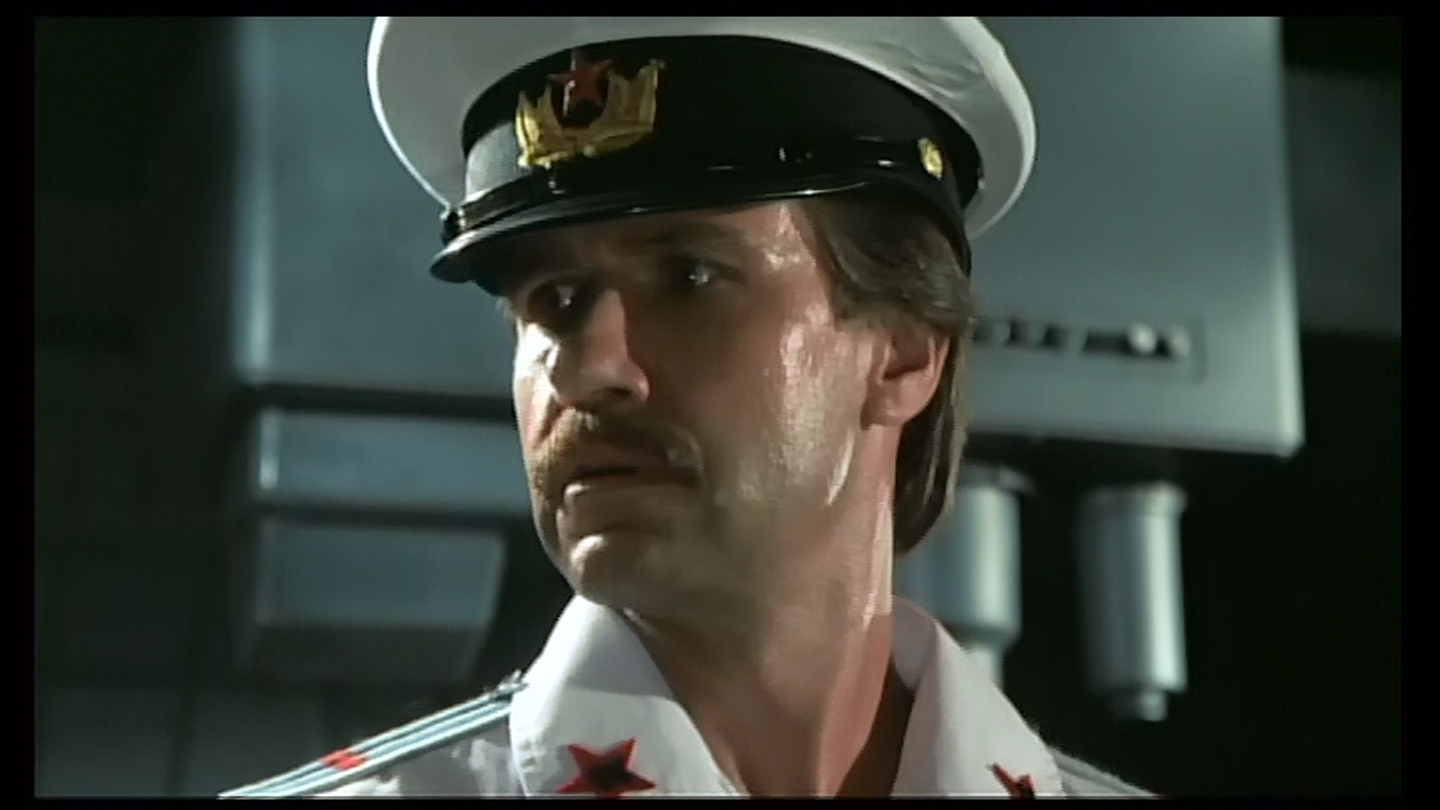
For the first time, Japan establishes a Godzilla Emergency Counter-Measure Headquarters. In many subsequent films, a military, and even a civilian response team will form a sort of support network for protagonists.
Further demonstrating that Godzilla is consuming nuclear fuel for energy, the Big Guy shows up at the Ihama nuclear power plant in Shizuoka prefecture. He doesn't eat the power, rather holding it to himself and letting to charge him. His back fins light up so the viewer can tell it's working. But as he is finshing a flock of birds flies past, and Godzilla follows them. This becomes the science answer, Godzilla can be led with bird calls.
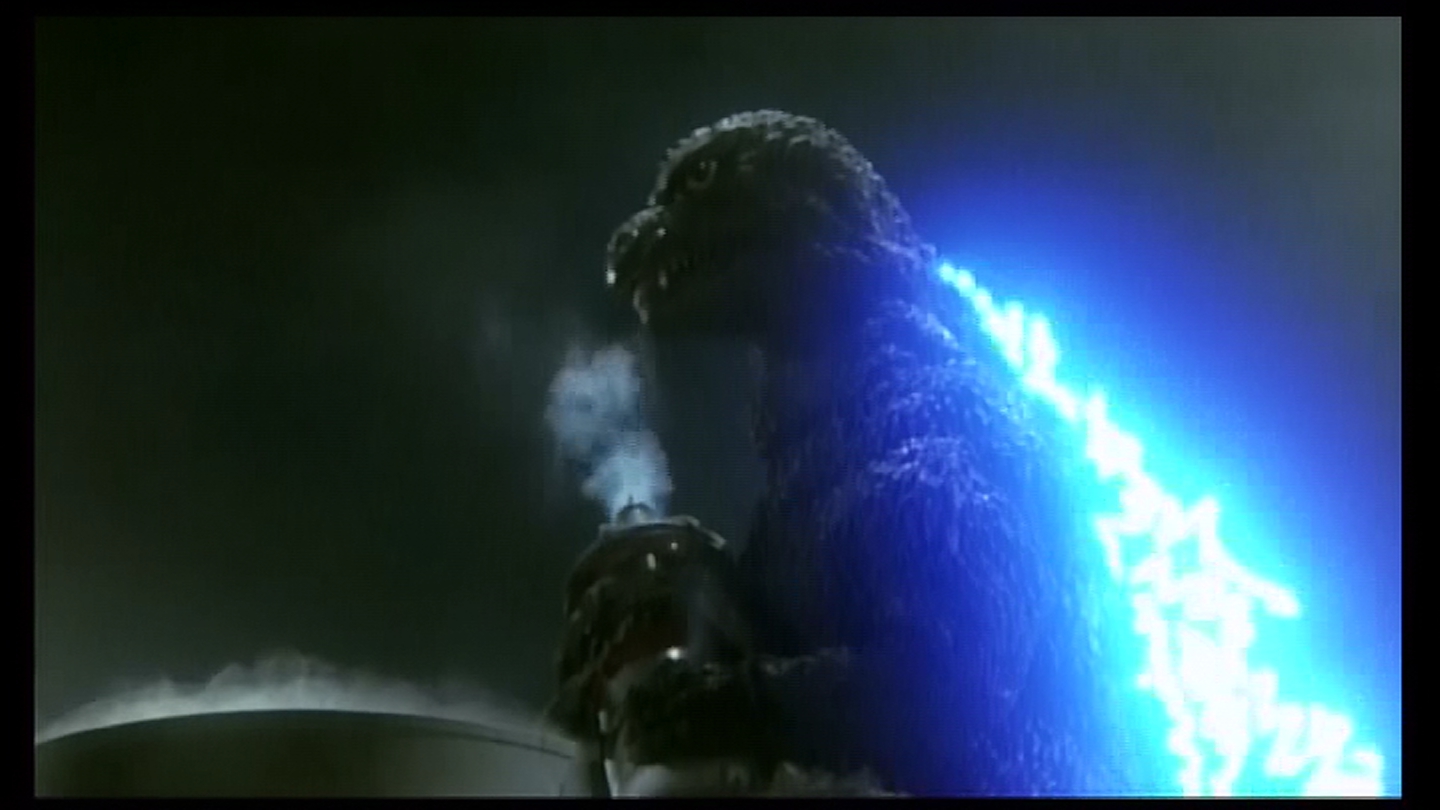
Although conventional weapons are useless against Godzilla, Japane's native invension, the Super X, has been developed in secret. This is a combination of using fantasy science to confront the monster, along with a growing feeling in the series that the military isn't quite to useless after all. Super X has weapons specifically designed cadmium ordinance to counter Godzilla.
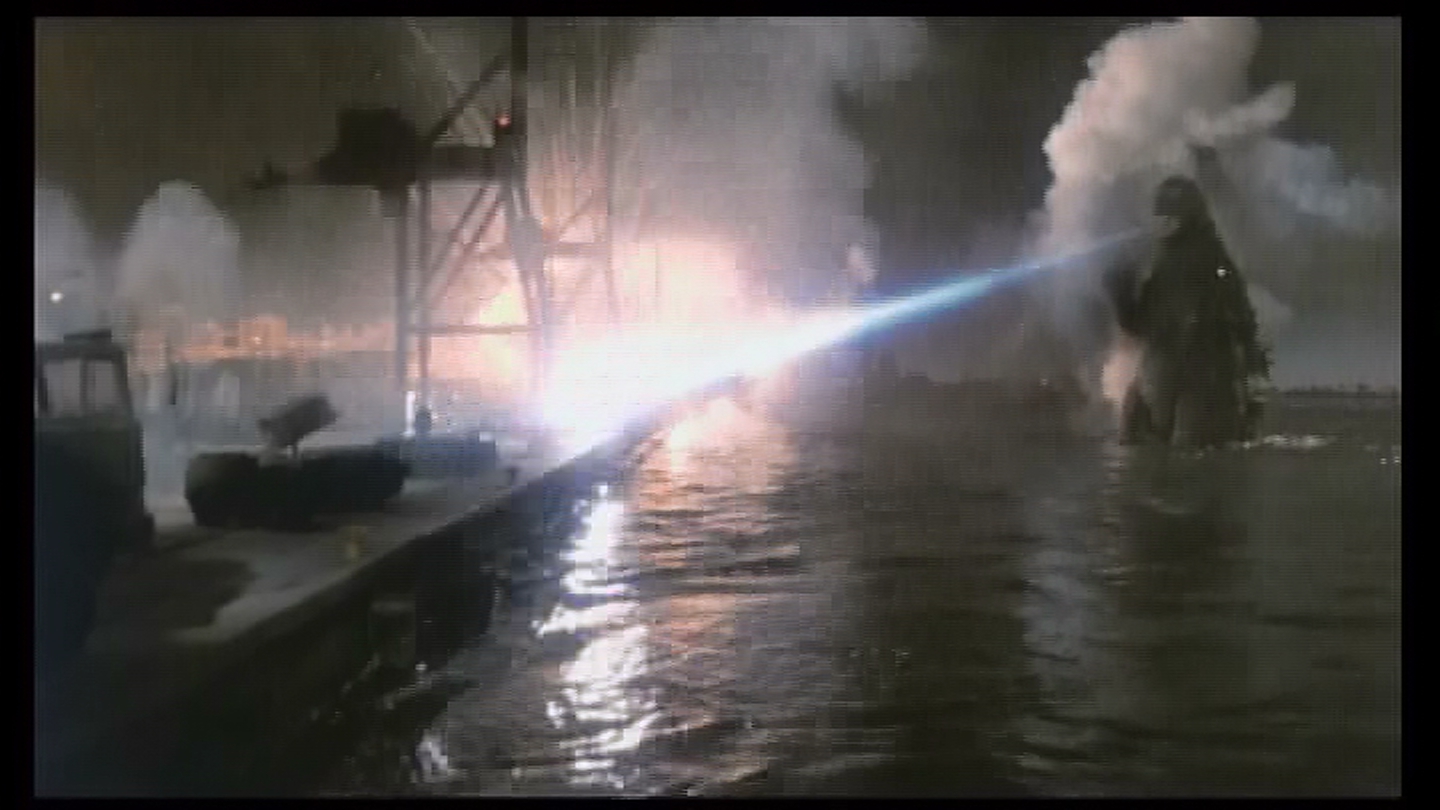
In an interesting twist, especially for someone who has soaked in Hollywood films in whch politicians are portrayed as corrupt or weak, Prime Minister Mitamura is sympathetic. Although he stomps on our truth-seeking reporter's story concerning Godzilla, he reveals the story to reduce tensions between the US and the Soviet Union. When the Soviet Union and the United States both declare that they have to use nuclear weapons to destroy Godzilla, he very calmly refuses, citing Japan's "Three principles": non production, non-posession, non-introduction of nuclear weapons into Japan. In the face of some very ardent arguments, Mitamura remains adamant, and both the camera and script praise him for doing so. This is the heart of The Return of Godzilla, the protest against nuclear weapons and the mounting fear that was the Cold War.
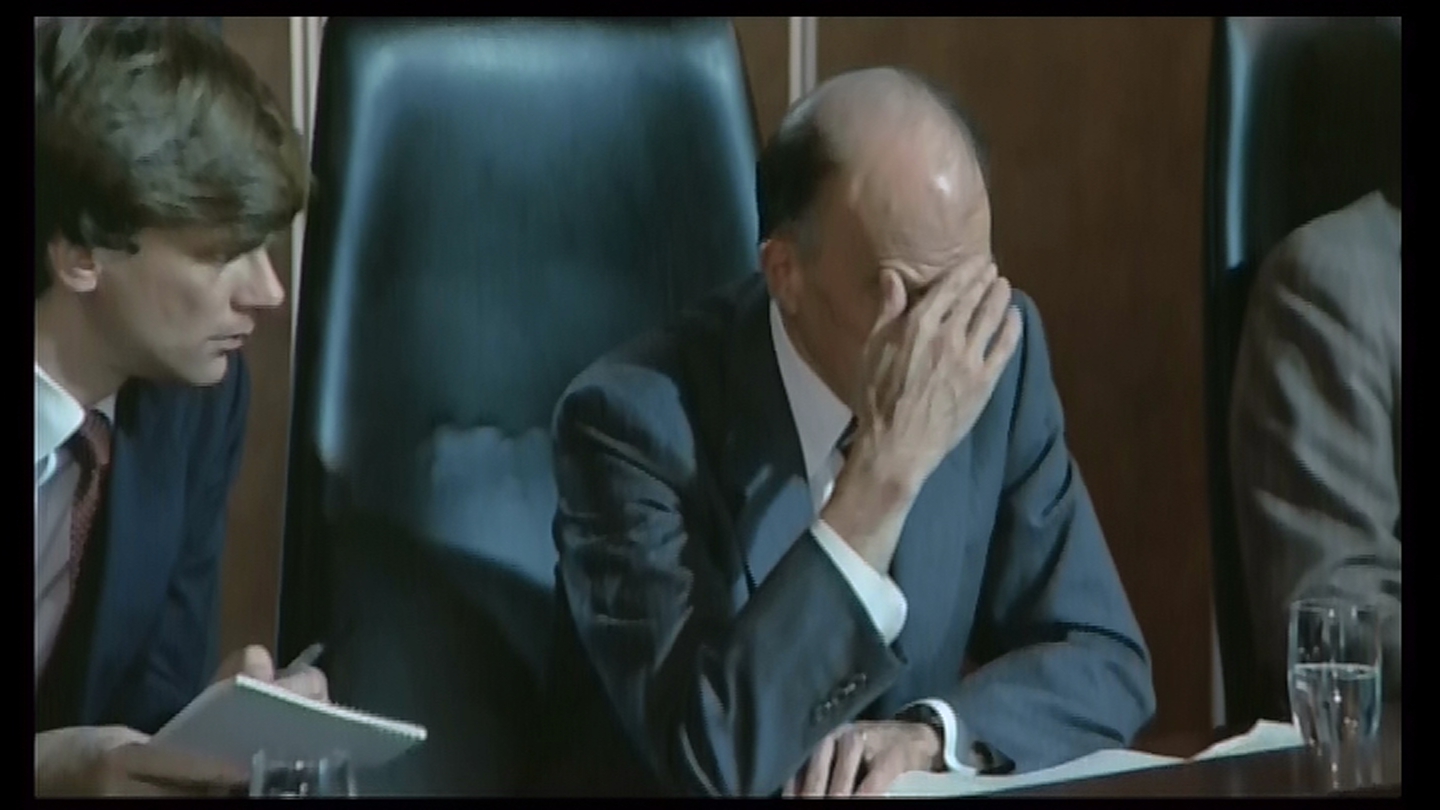
Like a moth to a flame, Godzilla is drawn to Tokyo. The military sends everything they have against him, but with a single sweep of his atomic heat rat, Godzilla destroys the Defense Forces. Godzilla is larger than he was previously, eighty meters tall, and he's lost his heroic side. Godzilla is in Tokyo to destroy, and spends a lot of time doing so.
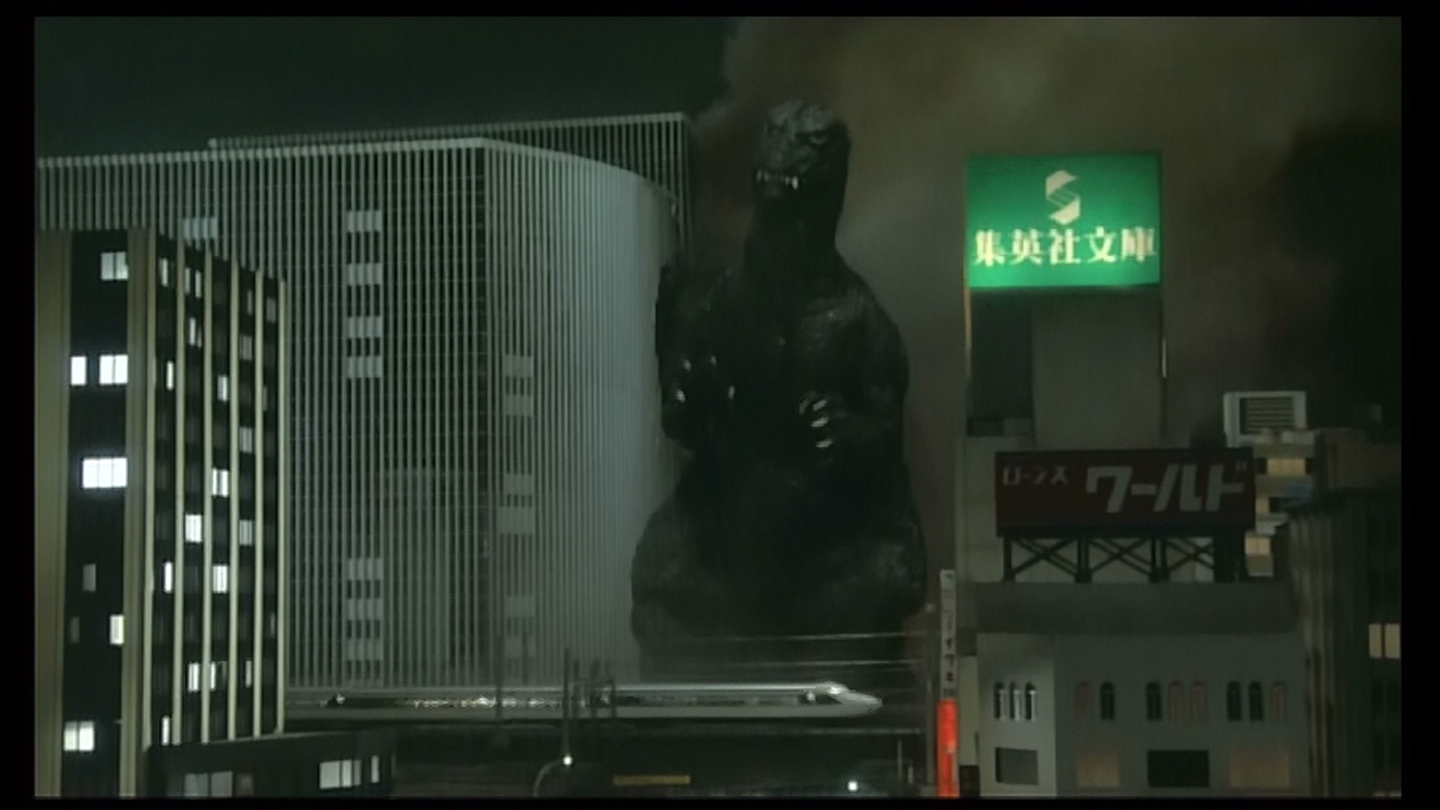
Although this takes place outside of the post 1954 Showa continuity, there are small nods to it. As Tokyo awaits the arrival of the Super X, laser, or perhaps maser tanks engage Godzilla. These look like updates of the tanks which first appeared in Mothra and War of the Gargantuas. These are weak, however. They don't even irritate Godzilla.
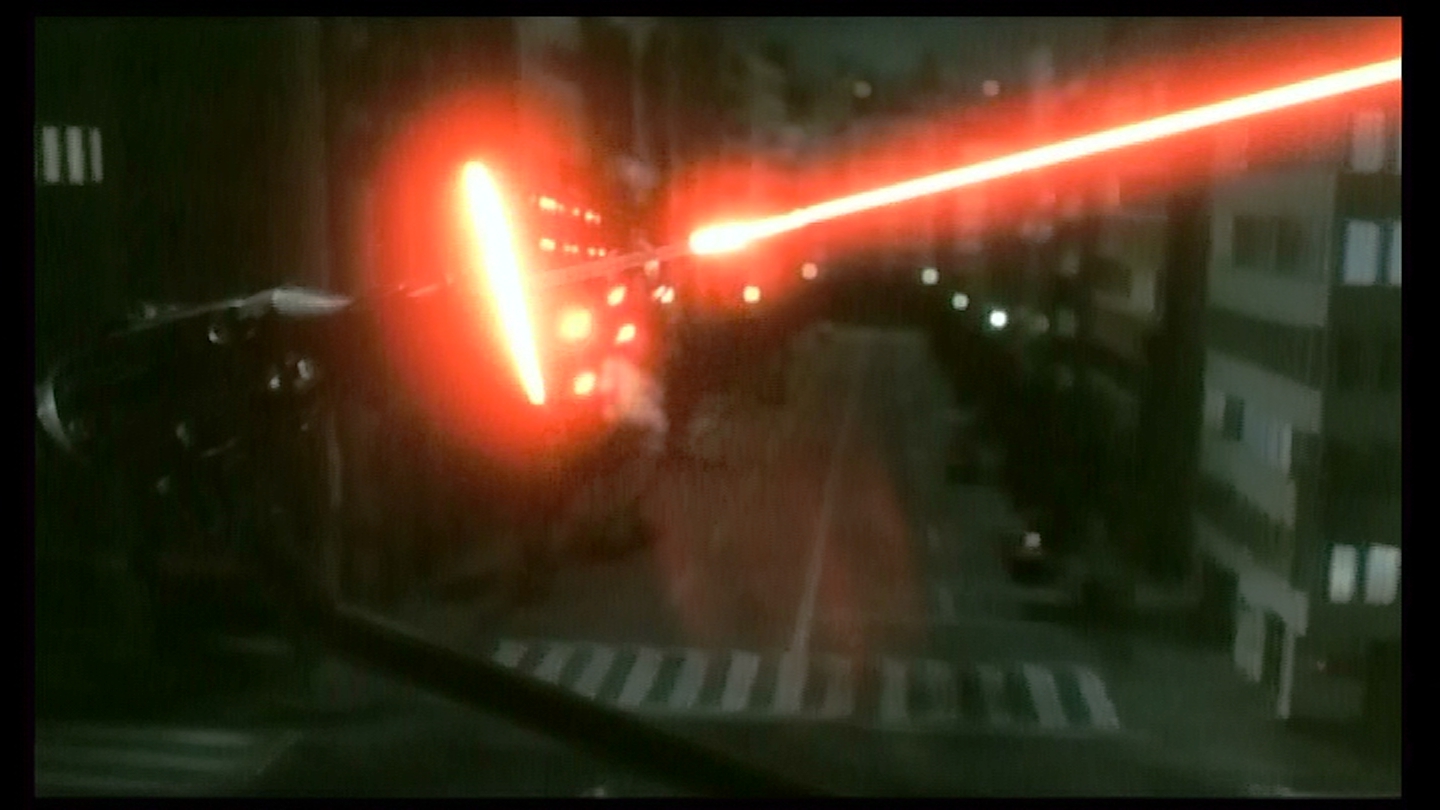
Of course, saying no to nuclear weapons isn't as easy as just sayng no. The Soviets have a back-up nuke ready, and Godzilla's destructive wake causes a launch. Oops. The Americans agree intercept the missile, which makes his a high-altitude airburst rather than a ground burst. Still, this causes lightning which is attracted to Godzilla, and wakes him up again, in a callback to Godzilla vs Mechagodzilla. This energizes Godzilla enough to recover from the cadmium shells.
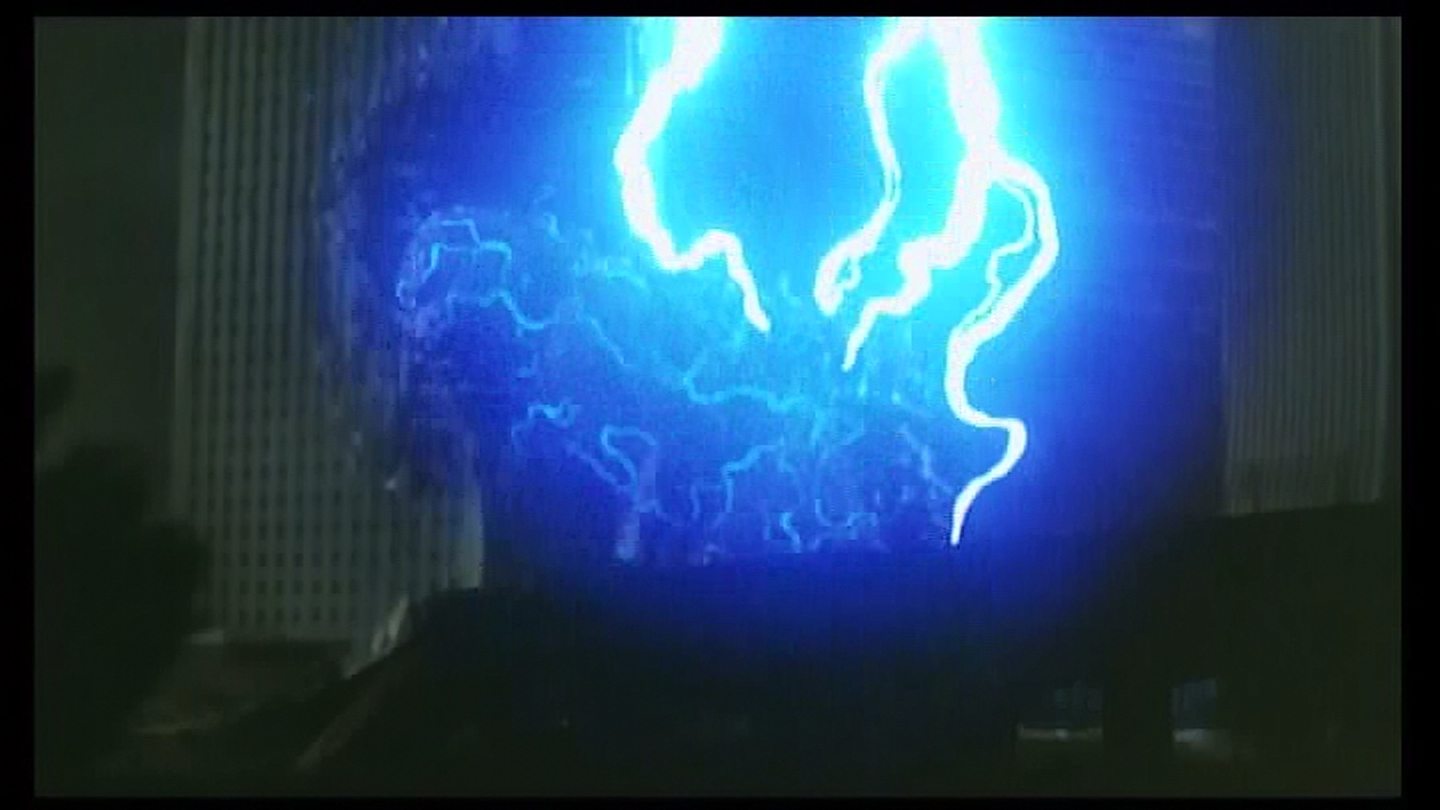
The Super X is in essence a flying tank. It's heavily armored, hovers and flies by use of directional jets. It's blocky and unaerodynamic. But it is as effective a response as Japan will get before building Mechagodzilla. Three cadmium shells fires into Godzilla's mouth knock the Big Guy down. Of course, this effective defense, like high-voltage wires, is never used again. Godzilla then drops a building on trhe Super X.
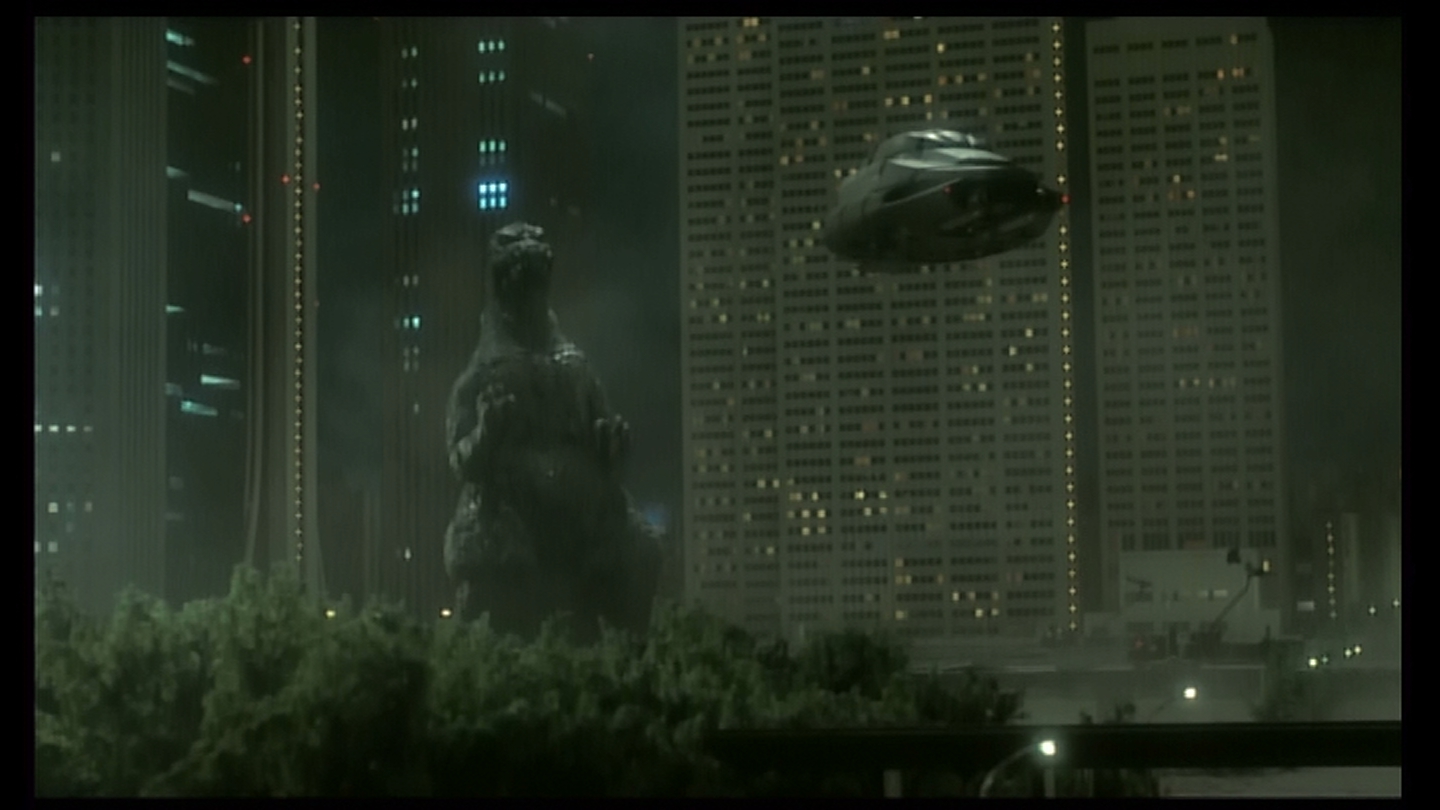
Fortunately, science is there to take up the military's slack. Godzilla is lured to Mt. Mihara, an active volcano. There, the cliffside he's shanding on is detonated, and Godzilla plunges into the laval below. And although he's trashed Tokyo and a nuclear power plant, the music is sad, and Prime Minster Mitamura looks sad as he watches Godzilla falling into the crater.
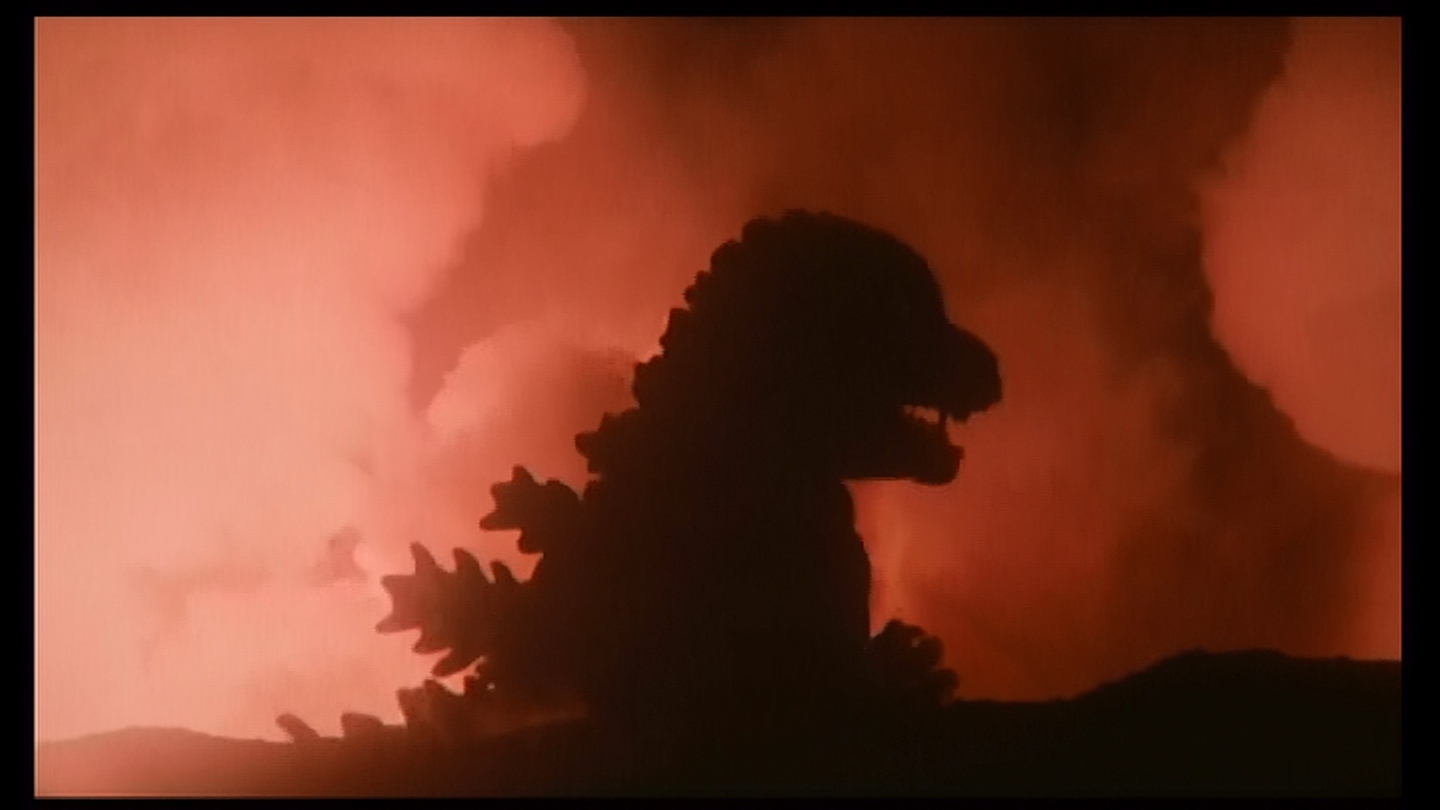
While the Godzilla work on The Return of Godzilla is good, the majority of the human drama is weak. The characters are pretty thin, and they are there mostly to witness the plot, rather than contribute to it. They do little to interact with Godzilla. The most powerful scenes involve the confrontation between the American and Soviet Special Emissaries, with the Prime Minister caught in between. But these scenes are sadly brief. But the film was enough to restart and energize the franchise, bringing Godzilla into a modern idiom.
Next up, the Godzilla team goes to North Korea to make a film according to Kim Jong-il's cnematic principles. Yes really.
No comments:
Post a Comment